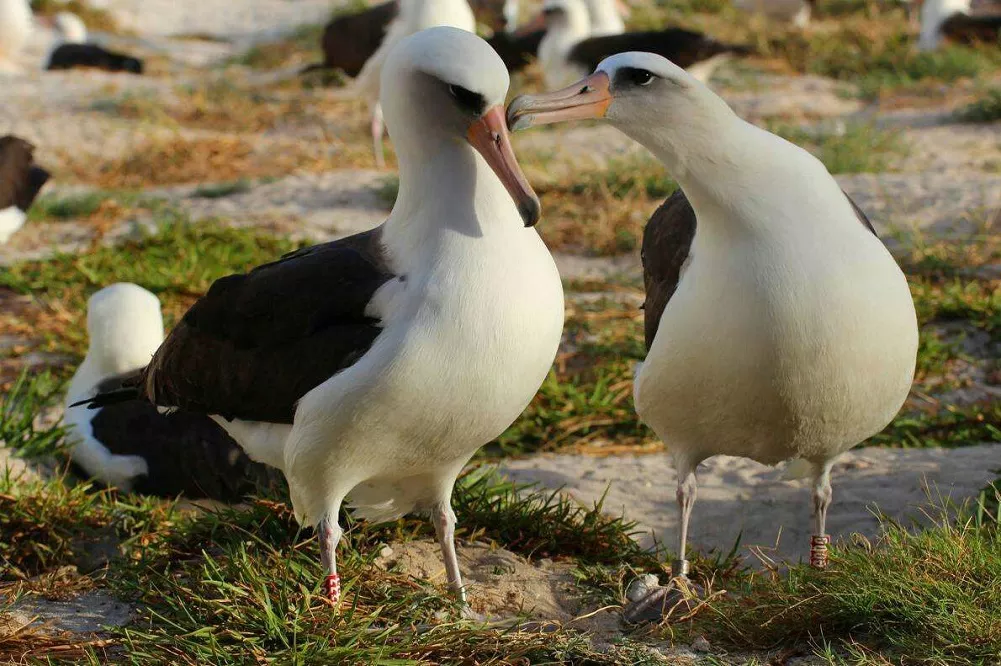The wandering albatross is one of the largest seabirds in the world, with a wingspan of up to 3.5 meters (11 feet) and weighing up to 12 kilograms (26 pounds). These magnificent birds are known for their effortless gliding over the ocean, covering thousands of kilometers on their annual migrations.
In this article, we will explore where wandering albatrosses live, what they eat, their breeding habits, and some threats that they face in their natural habitat.
Distribution and Habitat
Wandering albatrosses are found in the southern hemisphere, with a range that includes the waters around Antarctica, South Georgia, and other sub-Antarctic islands. They are migratory birds, spending most of their time at sea but returning to land only to breed.
During breeding season, wandering albatrosses return to remote islands such as South Georgia, Kerguelen Islands, Crozet Islands, and Macquarie Island. These islands provide ideal nesting sites for the birds, with rocky cliffs and tussock grass providing shelter and protection from predators.
Wandering albatrosses spend most of their lives soaring over the ocean, with their broad wings allowing them to cover great distances with minimal effort. They are known to travel thousands of kilometers in search of food, often following ships or fishing vessels to take advantage of discarded fish and squid.
Diet
Wandering albatrosses are opportunistic feeders, feeding mainly on fish, squid, and krill. They have a unique adaptation in their digestive system that allows them to remove excess salt from seawater, making it possible for them to drink seawater if necessary.
These birds have been observed diving to depths of up to 10 meters (33 feet) to catch prey, using their sharp beaks to snatch fish and squid from the surface of the ocean. They are also known to scavenge on carrion, feeding on the carcasses of dead marine animals such as seals and whales.
Breeding
Wandering albatrosses are monogamous birds, forming pairs for life. Breeding typically occurs between November and March, with females laying a single egg in a shallow nest made of grass and soil.
Both male and female birds take turns incubating the egg, which hatches after about 80 days. The parents then take turns caring for the chick, feeding it regurgitated food until it is ready to fledge at around 9 months old.
Threats
Wandering albatross populations face a number of threats in their natural habitat. One of the biggest threats is longline fishing, where fishing vessels drop lines with baited hooks that can be hundreds of kilometers long. Wandering albatrosses are attracted to these lines and can become hooked or entangled, leading to injury or death.
In addition to direct threats from fishing activity, wandering albatrosses are also impacted by climate change. Changes in ocean temperatures and currents can affect the distribution of prey species, making it more difficult for the birds to find food.
Conservation Efforts
Wandering albatrosses are listed as a vulnerable species by the International Union for Conservation of Nature (IUCN), and there are a number of conservation efforts aimed at protecting these magnificent birds.
One such effort is the Agreement on the Conservation of Albatrosses and Petrels (ACAP), an international treaty that aims to reduce the impact of human activities on these birds and their habitats. The treaty includes measures such as setting limits on the number of birds that can be taken as bycatch, requiring fishing vessels to use bird-friendly fishing gear, and establishing protected areas around breeding sites.
Conclusion
The wandering albatross is a majestic bird that spends most of its life soaring over the ocean. These birds are found in the southern hemisphere and return to remote islands to breed. While they face a number of threats in their natural habitat, there are efforts underway to protect and conserve these magnificent birds for future generations to enjoy.
Related topics:
- What does an Albatross look like?
- Where Do Albatross Live? All You Need To Know
- Bird with the Largest Wingspan: the Wandering Albatross
- What bird lives the longest?


 Facebook
Facebook  Instagram
Instagram  Youtube
Youtube 